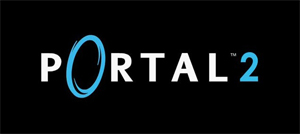
Portal 2 is a game that most developers would be afraid to make. Portal was almost the definition of an under the radar launch, a side project that was put into Valve’s The Orange Box. At the time, it was assumed it would be a fun little distraction, a side dish to Half-Life 2: Episode 2‘s entree. Fast forward a few years, and almost every gamer can tell you “the cake is a lie” or at least sing a few bits of the end credits song “Still Alive”, but I’m not sure they could tell you how Episode 2 ended.
So, did Valve manage to top one of the most beloved games to arrive this generation? That’s a secret that can only be answered after the jump.
Short answer, yes. If you wanted a quick validation that Portal 2 is as fun as you would hope, then there you go. If you’re on the fence (and if you’ve played the first Portal, I’m not sure how you could be), let me break it down between what I liked, loved, and felt indifferent towards.
GLaDOS – The bitch is back, to steal the awkward tagline from Aliens. GLaDOS is just as you remembered her, except perhaps quite a bit more bitter. Destroyed (spoilers) at the end of Portal, the sequel wouldn’t be nearly as entertaining without her. Naturally, early in the game events beyond your control force the reboot of your favorite rogue A.I., and before you know it she’s reassembling test chambers before your very eyes. However, I will say that Portal 2 avoids becoming a retread of Portal‘s test chamber after test chamber gameplay, but I don’t want to elaborate for fear of spoilers.
Wheatley – voice by Stephen Merchant, of BBC’s The Office fame, Wheatley is a great addition to the limited cast of Portal 2. His bumbling ineptitude is a nice contrast to the cold, calculating GLaDOS, and Valve gets a lot more mileage out of him than you initially suspect. Wheatley also provides a bit of balance to the story, which helps differentiate Portal 2 from its predecessor. Having a third party involved in the Chell / GLaDOS conflict, acting primarily as an observer initially, helps play up how delightfully absurd the A.I.-centric story truly is.
The Source Engine – Portal 2 isn’t mind-blowing in the graphics department, but it utilizes art direction incredibly well. The design, coupled with some nice tune ups to Valve’s in house Source engine, really make the game shine. Moments where massive chambers collide feel appropriately huge, there are some impressive effects in the factory, and the physics still continue to impress. Not bad for an engine that’s been in use since 2004.
The new toys – Portal 2 is riddled with new objects for puzzle solving. This ranges from the speed increasing Propulsion Gel (originally a diet aid!), the jump increasing Repulsion Gel, a portal surface gel, and a few others. These tools could have felt gimmicky, but rather feel like the natural extension of the Aperture products featured in the first game. They also help provide some needed variety to the puzzles, but I’ll elaborate on that later.
The story – Portal 2 has wonderful moments of puzzle solving, exploration, pulse-pounding escapes, and laugh-out-loud moments. Very few games can put the player through so much so effortlessly, so Valve should be proud of the work on display here. The game is addictive, and will suck you in and hold you in its grasp until the very end.
So what didn’t I love?
Cave Johnson – Johnson is a new character to the Portal world. He’s the CEO of Aperture Science, and his voice echoes throughout the facility, voiced wonderfully by J.K. Simmons. So why is he in the “didn’t love” section? First off, let me say that I strongly liked the Johnson character. However, when you compare him to the excellence of GLaDOS and Wheatley, he just isn’t as interesting. True, Cold War-era, misogynistic CEOs are entertaining, but he almost feels the least flawed, the least human of a cast of robots and A.I.s.
Difficulty and variety – Portal 2 isn’t very difficult. I suspect that this might have been due to the popularity of the first game with casual players, but I’m not certain. Unfortunately, there are just so many ways you can be confronted with a “you’re here and need to be there” situation with the same tools before you don’t immediately see solutions. No chamber took me a particularly lengthy amount of time, and I suspect that will be most people’s experience with the game. That being said, Portal 2 makes up for this problem by focusing more on story and characters, which helps break up the puzzles. Unfortunately, like the previous game, Portal 2 isn’t a long single player experience: I finished the game in roughly five hours.
The fake outs – There are several moments in Portal 2 when you’re presented with information that implies you’re coming to the conclusion. Perhaps it is poking fun at the easy to blow through chamber counter in the first game, but you can only go through so many “you’re almost at the end” fake outs before it loses its effect.
Portal 2 is an excellent title, and a worthy sequel to the surprise hit Portal. Bottom line: if you loved Portal, you’ll at least like Portal 2. However, unlike the prior title, Portal 2 feels like a complete experience and is worth your $50.
Portal 2 was played on Steam (PC / Mac). The Single Player campaign was completed in its entirety. Check back later in the week for our review of the co-op portion of the game!
